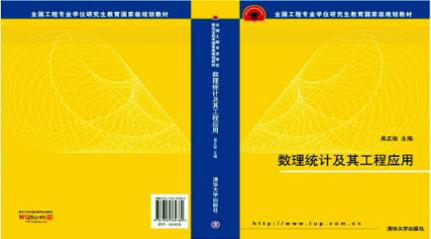
当前课程知识点:Socially-Responsible Real Estate Development: Learning to Use Impact Assessment Tools Effectively > Module 4: Case Study: Forest City > Forest City Case Study > Additional Forest City Information
After watching the Forest City videos, past students have asked several common questions about the case. This section lists those questions and includes full answers to them.
1) What legal loophole did the developer take advantage of?
In late December 2013, Country Garden purchased 2,000 hectares in a marine fishing area between Singapore and the Malaysian state of Johor, at a cost of about USD13,400 per hectare (RMB81,200). This land price was 0.1% the per hectare cost of Country Garden’s previous site acquisition in Johor, and only 10% the unit cost of any other offshore parcel sale in the state’s history (Allen 2017). Although the area had been slated for environmental protection by the regional planning authority, the sultan has the legal authority to sell state property at any time, including the foreshore and seabed areas off the coast. Local reports indicate that sand filling began on the first day of 2014, just one week later, immediately atop the seagrass meadow (Rahman 2017).
At first, the dumping proceeded without an environmental impact assessment, even though the federal government has strict assessment criteria for coastal reclamation. The developer later claimed this was legally proper because it was only filling a 49-hectare “study area.” Land records signed after the filling began show that two of the parcels were reconfigured to be 49.3 hectares, just under the 50-hectacre threshold that triggers a mandatory EIA (Allen 2017). Similar “legal loopholes” for reclamation projects are frequently used in coastal Chinese provinces to avoid triggering government oversight (Ma et al. 2014).
2) Country Garden claimed that they had widespread support from the community but not the local fishermen. Explain this situation.
During the EIA, the EIA consultant conducted a survey of local attitudes towards Forest City (Williams 2016). The survey found that almost all respondents though the project would damage the fishing ground and marginalize fishermen. 80% of respondents believe the project would raise their standard of living, and 30% believed they might find employment opportunities. Overall, only 40% of respondents had heard about the project, suggesting the surveyed population may not have been those facing immediate local impacts. At a meeting in 2014, residents demanded to know how the developer had conducted its survey, insisting that there were widespread local objections to the project’s design and secrecy. Some residents speculate that the developer may have hand-picked the respondents to their survey.
Local opinions are mixed about the Forest City project, and most are not totally opposed to the project. Many residents, including some fishermen, feel development is inevitable in their local district, and most would prefer to benefit from these trends rather than be excluded from participation. Some are hopeful that Forest City will provide the long-term job its proponents promise, even though almost all construction and management jobs are held by temporary foreign workers.
3) Does all construction stop when doing an EIA? Can EIA and SIA be put forward at the same time?
Under normal circumstances, an EIA and SIA is conducted prior to project initiation. Traditionally, impact assessment requires that developers compare the project to a “no-build” option and compare costs and benefits to this option. In the case of Forest City, the developer was able to circumvent the EIA through legal creativity and powerful local relationships. But because it could not satisfy all affected parties—fishermen, local residents, and the Government of Singapore—it was forced to conduct one retroactively. This required that construction be halted so that the evaluator and government could asses the value of the project.
There are good reasons to conduct EIA and SIA at the same time, especially when the evaluations are studying complementary effects. In the Forest City case, environmental and social impacts are highly entwined. Sand fill in Johor’s marine and coastal environments does not just mean environmental damage; it means lost income to fishermen and increased inland flooding risks. Thus, it can be advantageous to link EIA to SIA when impacts are shared.
4) The local Department of Environment seemed to be unaware of this enormous project in advance. How could the Sultan proceed with a project in his own territory without permission from the local government?
In Johor, the Sultan has unique legal powers and great political clout. Under Malaysian land law, the “state authority” has the power to alienate state property into private hands, including “foreshore and seabed areas.” In Johor, the state authority is the Sultan. The Sultan can thus allow a project to proceed without seeking prior approvals, provided it does not interfere with prior, private rights to land. By alienating an offshore area with support from the Sultan, the developer could ensure that the project would not directly interact with existing land claims or environmentally protected areas.
Beyond his legal role, the Sultan is also an influential political actor in the state. He often uses his sovereign authority to initiate and direct particular development projects. He is a driving force behind many business deals and land transfers, including several land reclamation projects, mining operations, and urban development schemes. In some cases, as in Forest City, he will take an equity share in projects he backs. The Sultan has argued that these equity-sharing arrangements are of benefit to the state, although many times these shares appear to be closely held by the Sultan and his associates (Aw 2014)
In Malaysia, there are two levels of environmental governance: state (e.g. Johor) and federal (Malaysia-wide). The Johor Department of Environment has a regulatory and monitoring role over land, but does not have the authority to halt land development projects. While the federal Department of Environment does sometimes review and modify local projects, land and water development is a local state power in Malaysia and is seen as the prerogative of each state.
5) How did the negotiation process work? Did the project change due to the negotiation in the EIA or before the EIA?
One of the reasons the developer was unable to understand the extent of local impacts was that it did not negotiate with local stakeholders beforehand, much less consult with them. The Sultan and developer did arrange a meeting with the fishermen’s association to inform them they would be modestly compensated, but made no attempt to determine whether the compensation was equivalent to livelihood losses. Neither the initial nor revised compensation will offset fishermen’s permanently lost income and permanently increased fishing costs.
The project was modified according to changes proposed in the DEIA. DEIA records and media reports show significant local concern about seagrass impacts and changes to the Straits’ hydrological regime, which became a major focus of the DEIA revisions. However, it is not clear whose agreement was sought over the final proposed changes. The new site design conforms sufficiently to environmental law, but the project continues to be contested at many levels of government.
References
Allen, Nick B. 2017. “Terra Ex Machina: Land Building and the Breach of Property Regimes.” Master’s thesis, Cambridge, MA: Massachusetts Instititute of Technology.
Aw, Nigel. 2014. “The Case of Forest City and the Johor Sultan.” Malaysiakini. July 14. https://www.malaysiakini.com/news/268649.
Ma, Zhijun, David S. Melville, Jianguo Liu, Ying Chen, Hongyan Yang, Wenwei Ren, Zhengwang Zhang, Theunis Piersma, and Bo Li. 2014. “Rethinking China’s New Great Wall.” Science 346 (6212): 912–14. doi:10.1126/science.1257258.
Rahman, Serina. 2017. “Johor’s Forest City Faces Critical Challenges.” 3. Trends in Southeast Asia. Singapore: ISEAS – Yusof Ishak Institute. https://www.iseas.edu.sg/images/pdf/TRS3_17%20(002).pdf.
Williams, Joseph Marcel R. 2016. “Evaluating the Diverse Impacts of Megaprojects: The Case of Forest City in Johor, Malaysia.” Master’s thesis, Massachusetts Institute of Technology. http://dspace.mit.edu/handle/1721.1/105036.
-Welcome
--Welcome
-Course Welcome
--Welcome
-Entrance Survey
-Entrance Survey
-Learning Objectives
-Course Schedule
-Meet Your Course Instructors
-Grading and Completion Criteria
--html
-Introduction
-Lectures
--html
-Readings
--Social Impact Assessment: The State of the Art
--Social Impact Assessment and Public Participation in China
-Developer Interview
--Module 1
--html
-Questions
-Assignment
--html
--html
--Peer Assessment
-Debrief
--Discuss
-Introduction
-Lectures
-Readings
--Methods of Environmental Impact Assessment
--Public Participation and Environmental Dispute Resolution
--Environmental Impact Assessment for Developing Countries in Asia
--Importance of Nonobjective Judgements
--Example Environmental Impact Statement
-Developer Interview
--html
--Module 2
--html
-Questions
-Assignment
--html
--Peer Assessment
-Debrief
--Discuss
-Introduction
--Text
-Lectures
--html
-Readings
--Introduction to Social Impact Assessment
--Effectiveness in Social Impact Assessment
--Example Social Impact Statement
-Developer Interview
--Video
--Text
-Questions
-Assignment
-Debrief
--Discuss
-Introduction
--Text
-Forest City Case Study
--Part 1
--Part 2
--Part 3
--Additional Forest City Information
-Lectures
-Readings
--Dealing with An Angry Public
--Facility Siting and Public Opposition
-Developer Interview
--Module 4
--Text
-Questions
-Assignment
--html
--SCENARIO
-Debrief
--Discuss
-Introduction
-Lectures
-Readings
--Why Would Corporations Behave in Socially Responsible Ways?
--Social Impact Assessments of Large Dams Throughout the World
--Environmental Sustainability Principles for the Real Estate Industry
-Developer Interview
--Module 5
-Questions
-Assignment
--html
--SCENARIO
-Debrief
-Further Resources
-Thank You
--Thank you for taking the course
-Acknowledgements

